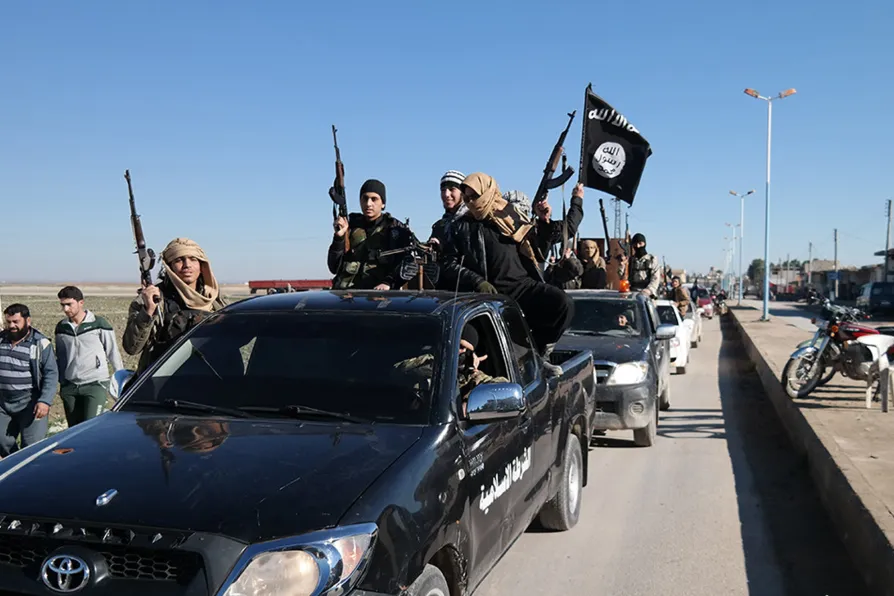
 In this file photo released on May 4, 2015, by a militant website, which has been verified and is consistent with other AP reporting, Islamic State militants drive in a convoy through Tel Abyad, northeast Syria
In this file photo released on May 4, 2015, by a militant website, which has been verified and is consistent with other AP reporting, Islamic State militants drive in a convoy through Tel Abyad, northeast Syria
THE threat from Islamic State (Isis), al-Qaida extremists and their affiliates is most intense in parts of Africa, and risks are growing in Syria, United Nations experts said in a new report.
Their report to the UN security council, circulated on Wednesday, said West Africa’s al-Qaida-linked Jama’at Nasr al-Islam wal-Muslimin group, known as JNIM, and East Africa’s al-Qaida-linked al-Shabab have continued to expand their territorial control.
The experts, who monitor sanctions against the groups, said a “pivot towards parts of Africa” is ongoing partly because of Isis losses in the Middle East due to counterterrorism pressures.
There are also “increasing concerns about foreign terrorist fighters returning to Central Asia and Afghanistan, aiming to undermine regional security,” they said.
Isis meanwhile continues to represent “the most significant threat” to Europe and the Americas, the experts said, often by individuals radicalised via social media and encrypted messaging platforms from its Afghanistan-based Khorasan group.
In the United States, the experts said several alleged terrorist attack plots were “largely motivated by the Gaza and Israel conflict,” or by individuals radicalised by Isis.
They pointed to an American who pledged support to Isis and drove into a crowd in New Orleans on January 1, killing 14 people in the deadliest attack by al-Qaida or the Islamic State in the US since 2016.
In Africa’s Sahel region, the experts said, JNIM expanded its area of operations into northern Mali and Burkina Faso.
There was also a resurgence of activity by Isis in the Greater Sahara, “particularly along the Niger and Nigeria border, where the group was seeking to entrench itself.”
“JNIM reached a new level of operational capability to conduct complex attacks with drones, improvised explosive devices and large numbers of fighters against well-defended barracks,” the report said.
In East Africa, “al-Shabab maintained its resilience, intensifying operations in southern and central Somalia” and ongoing ties with Yemen’s Houthi rebels.
Syria, the experts said, remains “in a volatile and precarious phase” six months after the overthrow of former president Bashar al-Assad, which the report acknowledges was achieved by jihadist terror groups.
“Member states estimated that more than 5,000 foreign terrorist fighters were involved in the military operation in which Damascus was taken on December 8,” the 27-page report said.
Syria’s new interim President Ahmad al-Sharaa led rebel militia Hayat Tahrir al-Sham, once an al-Qaida affiliate.














